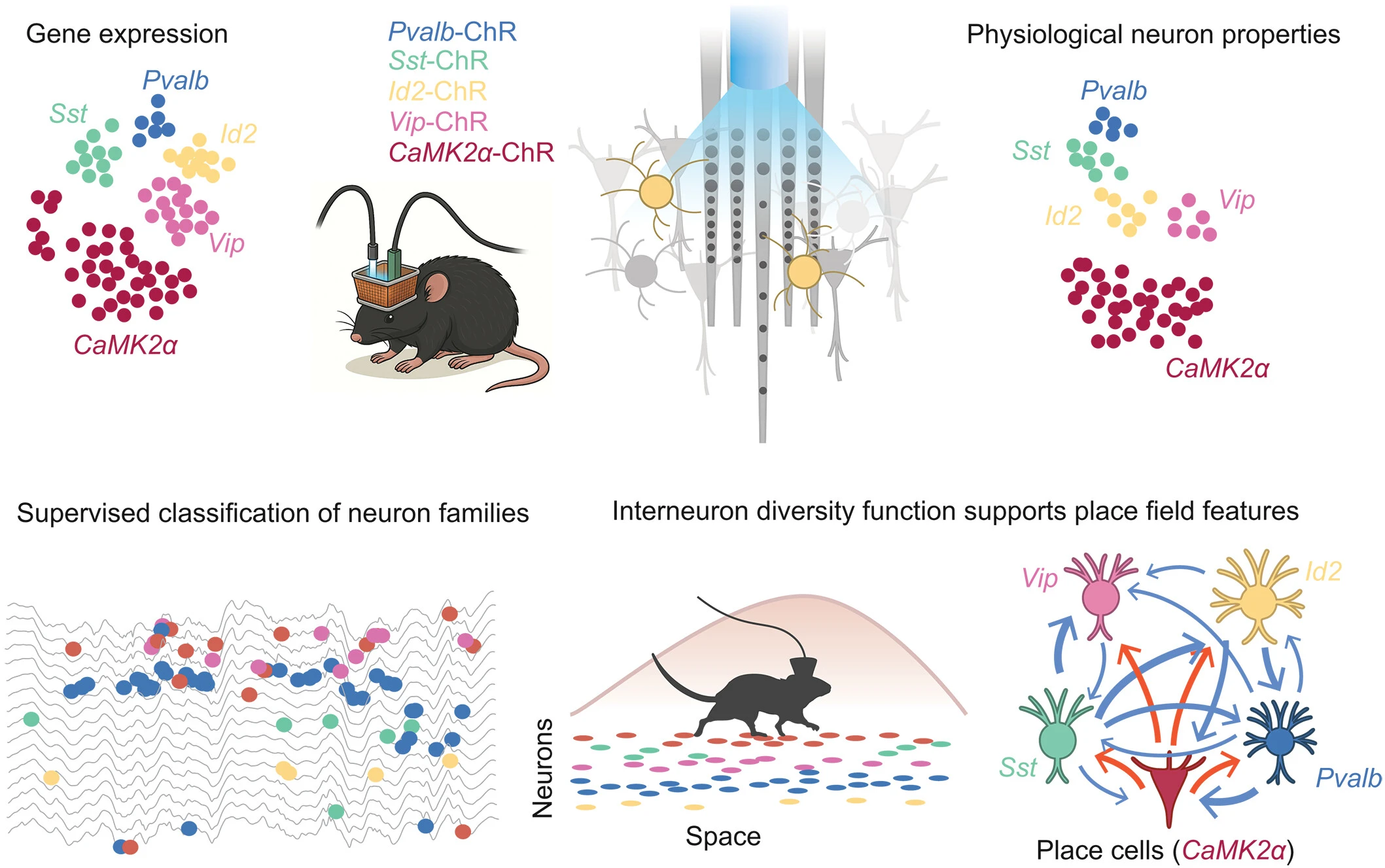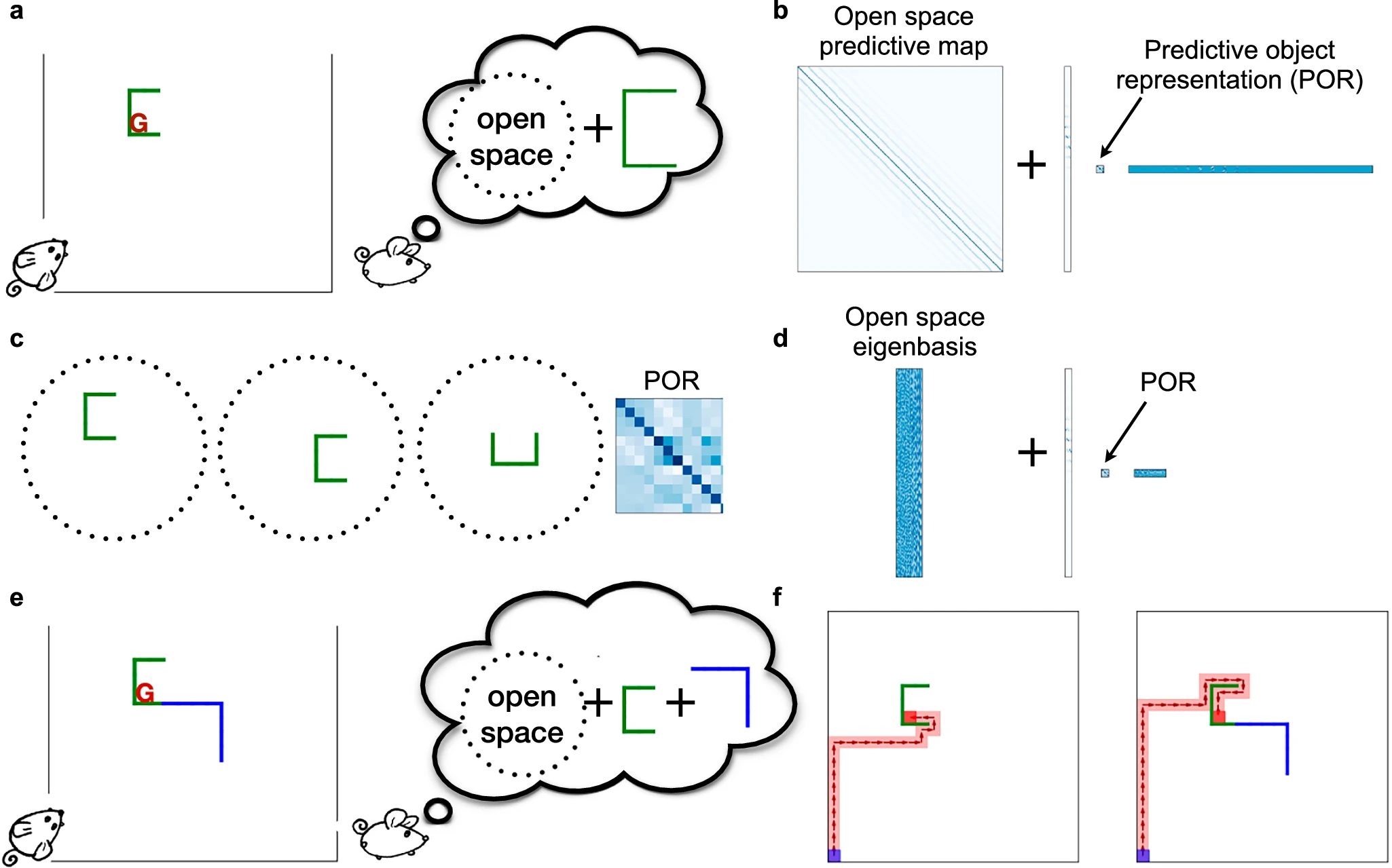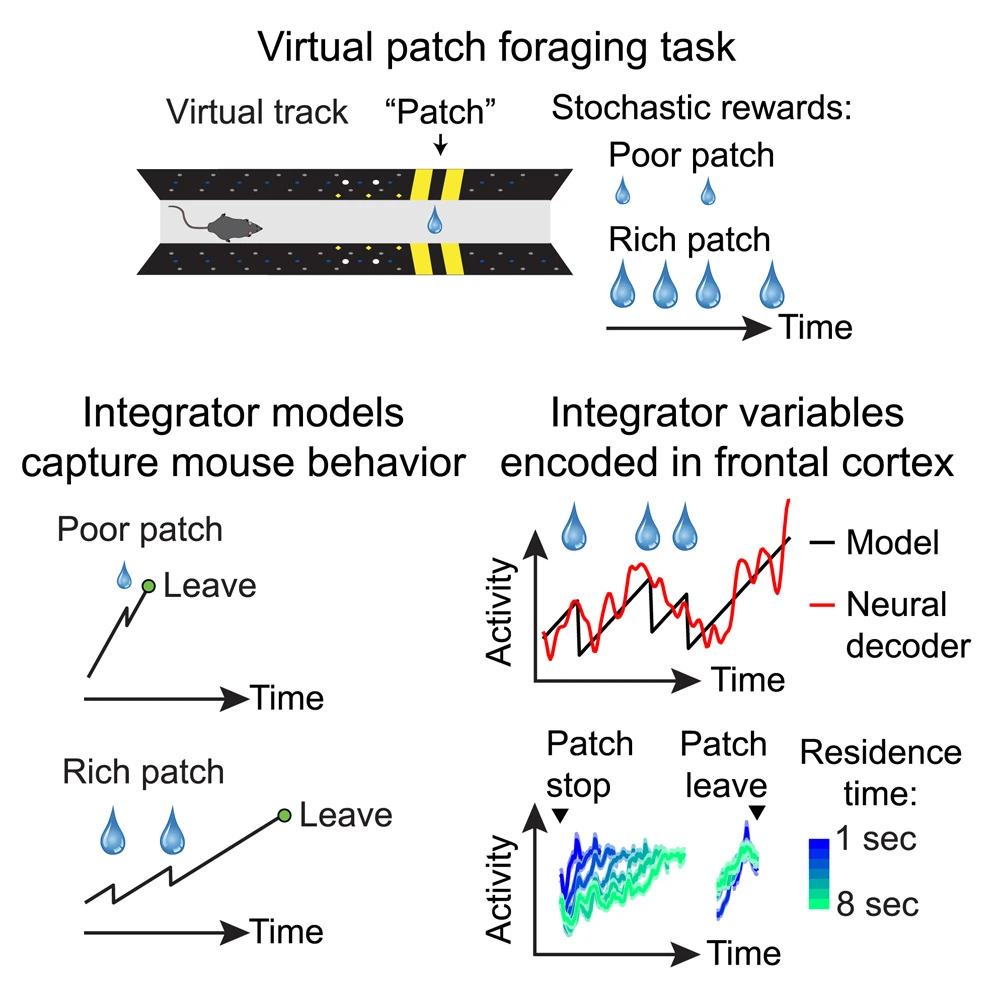August 2025
A tour through the brain’s code: interneuron teamwork, speed-boosted navigation, dopamine-shaped learning, compositional maps, and value-sensitive choices
Cooperative actions of interneuron families support the hippocampal spatial code

- Methods: Multi-shank silicon probes + optogenetic tagging of four interneuron families (Pvalb, Sst, Vip, Id2) in hippocampus and neocortex.
- Classification: Machine learning on physiological fingerprints achieved >89% accuracy, bridging genetics and in vivo physiology.
- Findings: Distinct interneuron families differentially sculpt pyramidal place fields; Pvalb suppressed early spikes, Sst/Id2 suppressed late, suggesting time-division control.
- Conclusion: Cooperative interneuron interactions are central to the hippocampal spatial map, beyond excitatory synaptic plasticity.
Speed modulations in grid cell information geometry

- Approach: Introduced Gaussian Process with Kernel Regression (GKR) to model neural manifolds + noise covariance in grid cell populations.
- Manifold dilation: Faster running speed stretched the toroidal-like manifold of grid codes.
- Noise trade-off: Noise also increased, but information gain from dilation outpaced noise costs.
- Result: Fisher information and decoding accuracy improved at higher speeds, while noise correlations projecting onto the manifold impaired coding.
- Implication: Population-level coding, not just single cells, explains why navigation accuracy improves with movement speed.
Tonic dopamine and biases in value learning

- Problem: Psychiatric disorders often feature biased future predictions (pessimism in depression, optimism in addiction).
- Model: RL framework with basal ganglia circuit architecture + dopamine receptor pharmacodynamics.
- Mechanism: Differences in D1 vs. D2 receptor affinities and sigmoidal dose–response curves mean tonic dopamine shifts sensitivity to positive vs. negative reward prediction errors.
- Evidence: Explains optimistic and pessimistic learning in both humans and mice.
- Significance: Provides a biologically grounded mechanism linking tonic dopamine to learning biases and psychiatric symptoms.
Reconciling flexibility and efficiency: compositional cognitive maps in MEC

- Model: Cognitive maps constructed from predictive object representations (PORs) perturbing a baseline open-space grid.
- Composition: PORs are translation/rotation invariant and recombinable, enabling efficient compositional map building.
- Neural mapping:
- Object vector cells = encode POR building blocks.
- Grid cells = baseline efficient spatial metric.
- Insight: MEC supports planning-ready compositional maps, reconciling flexible recombination with efficient path planning.
Competitive integration of time and reward in foraging

- Task: Head-fixed mice performed a VR patch-foraging paradigm with probabilistic, diminishing water rewards.
- Behavioral model: Mice integrated elapsed time (positive contribution) vs. received rewards (negative contribution), scaled by a latent patience state.
- Deviation from theory: Decisions systematically diverged from Marginal Value Theorem but were captured by competitive integration models.
- Neural evidence: Neuropixels across frontal cortex showed ramping activity encoding the integrated decision variable, oppositely modulated by time vs. reward.
- Conclusion: Frontal ramping dynamics provide a neural substrate for value-sensitive patch leaving.
References
- 1
- 2
- 3
- 4
- 5